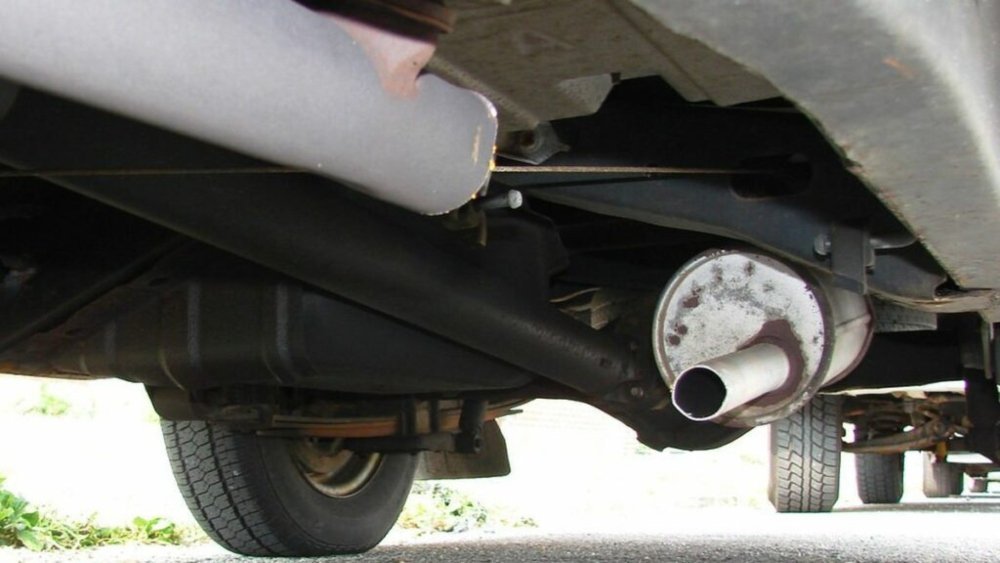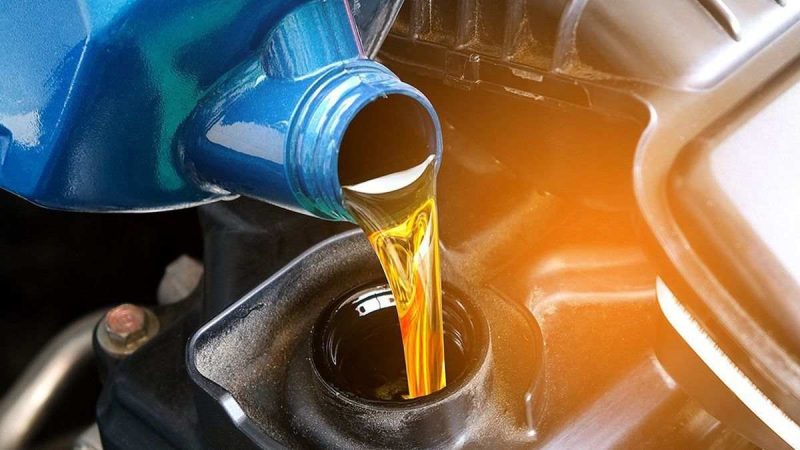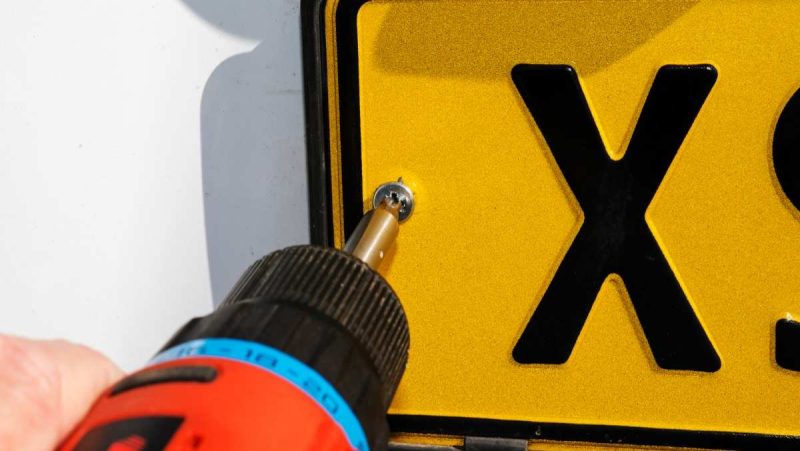Car Catalytic Converter Failure (Symptoms and Fixes)

The importance of addressing catalytic converter failures promptly cannot be overstated. These critical components play a vital role in reducing harmful emissions and pollutants from a vehicle’s exhaust gases, contributing to cleaner air and a healthier environment.
When a catalytic converter fails, it not only leads to decreased engine performance and fuel efficiency but also the risk of more extensive damage to other parts of the vehicle. Delaying repairs or replacements can result in higher repair costs and potential legal consequences, as tampering with or removing a catalytic converter is often illegal due to environmental regulations.
By addressing failures promptly, car owners can maintain their vehicle’s efficiency, reduce their environmental impact, and ensure compliance with legal requirements.
Symptoms of Catalytic Converter Failures
Symptoms of catalytic converter failures are crucial indicators for vehicle owners to recognize. These symptoms can alert drivers to potential issues with this emissions-control device, helping them take necessary action to maintain their vehicle’s performance and minimize environmental impact.
Common signs of a failing catalytic converter include:
- Reduced engine performance, characterized by sluggish acceleration and decreased power output.
- Dashboard warning lights, such as the Check Engine Light (CEL) and O2 sensor warnings, can also signal trouble.
- Unusual noises, such as rattling or hissing sounds.
Recognizing these symptoms promptly allows for timely diagnosis and repair, ensuring the catalytic converter’s efficiency and a cleaner, more environmentally responsible driving experience.
Reduced engine performance
Reduced engine performance is a concerning issue often associated with catalytic converter problems. When a catalytic converter begins to fail, it can hinder the smooth operation of a vehicle’s engine, resulting in noticeable performance issues.
Also read: Car Running Rich [Causes, Symptoms, How To Fix]
Drivers may experience sluggish acceleration, where the vehicle struggles to pick up speed as it should. Additionally, there may be an overall decrease in power output, making it challenging to navigate steep inclines or overtake other vehicles.
Recognizing reduced engine performance is crucial, as it serves as a clear symptom of a potential catalytic converter issue, prompting vehicle owners to address the problem promptly to prevent further damage and maintain the efficiency of their vehicle.
Dashboard warning lights
Dashboard warning lights are vital indicators that play a key role in alerting drivers to various issues within their vehicles, including potential problems with the catalytic converter. When it comes to catalytic converter issues, two warning lights often signal trouble: the Check Engine Light (CEL) and O2 sensor warnings.
The Check Engine Light illuminates when the vehicle’s onboard diagnostics system detects a problem, which can be related to the catalytic converter’s efficiency.
O2 sensor warnings specifically indicate a potential problem with the oxygen sensors, which are closely linked to the catalytic converter’s performance.
Ignoring these warning lights can lead to more severe issues and higher repair costs, making it essential for drivers to heed their signals and seek timely diagnostics and repairs to maintain the health of their vehicle.
Unusual noises
Unusual noises emanating from a vehicle can be a clear sign of catalytic converter problems that warrant attention. When a catalytic converter begins to fail, it may produce distinctive noises, including rattling or hissing sounds.
Rattling noises often indicate loose or broken components within the catalytic converter, while hissing sounds can result from leaks or ruptures in the converter’s structure. These audible cues serve as audible red flags, alerting drivers to potential issues with this vital emissions-control component.
Recognizing and addressing unusual noises promptly is crucial to prevent further damage, maintain vehicle performance, and reduce the risk of additional, more expensive repairs down the road.
Common Causes of Failures
Understanding the common causes of catalytic converter failures is essential for vehicle owners seeking to prevent issues and ensure the longevity of this crucial emissions-control device.
Overheating is a primary factor that can lead to catalytic converter problems, often caused by a rich air-fuel mixture or engine misfires. Excessive heat can damage the converter’s catalyst, reducing its efficiency.
Contaminants and poisons, such as exposure to oil and coolant, or the impact of certain fuel additives, can also compromise the converter’s performance over time. Physical damage from road debris or corrosion and rust can further accelerate wear and tear.
Recognizing these common causes of failures empowers car owners to take preventive measures and perform necessary maintenance to extend the life of their catalytic converter and maintain their vehicle’s environmental friendliness and performance.
Overheating
Overheating is a significant factor contributing to catalytic converter failures. When a catalytic converter is exposed to excessive heat, it can lead to a range of issues that compromise its functionality.
High temperatures can occur due to a rich air-fuel mixture, engine misfires, or problems with the vehicle’s ignition system. The intense heat can damage the catalyst within the converter, causing it to lose its efficiency in reducing harmful emissions.
Related: White Smoke From Exhaust [Causes & Fixes]
Overheating not only hampers the converter’s ability to perform its environmental role but also puts additional stress on the entire exhaust system, potentially leading to more extensive damage.
Recognizing and addressing overheating issues promptly, along with addressing the underlying causes, is crucial for preserving the health of the catalytic converter and maintaining the vehicle’s overall performance.
Contaminants and poisons
Contaminants and poisons are common culprits behind catalytic converter problems. Exposure to substances like oil, coolant, and certain fuel additives can introduce harmful contaminants into the catalytic converter.
Oil and coolant leaks can lead to a buildup of residues on the converter’s surface, impeding its ability to effectively convert exhaust gases. Some fuel additives, when used excessively or incorrectly, can introduce poisons that negatively affect the catalyst’s performance.
Over time, these contaminants and poisons can hinder the converter’s efficiency, leading to a reduction in its ability to reduce harmful emissions.
Recognizing the potential sources of these pollutants and taking preventive measures to avoid their introduction into the catalytic converter is crucial for maintaining its functionality and promoting a cleaner, more environmentally responsible vehicle operation.
Physical damage
Physical damage to a catalytic converter can be a significant cause of its malfunction and reduced efficiency. This type of damage can occur when the converter is exposed to road debris, such as rocks or debris from the road surface.
The impact of such objects can lead to dents, punctures, or even more severe structural damage to the converter’s casing. Additionally, corrosion and rust, especially in regions with harsh weather conditions, can weaken the converter over time.
Physical damage not only affects the appearance of the converter but also compromises its ability to catalyze exhaust gases effectively, ultimately leading to a reduction in its emissions-reducing capacity.
Recognizing the potential sources of physical damage and taking steps to protect the catalytic converter can help extend its lifespan and maintain the environmental integrity of a vehicle’s exhaust system.
Diagnosis and Testing
Diagnosis and testing are crucial steps in identifying issues with a catalytic converter and determining the necessary course of action. Several methods are commonly employed for this purpose.
One of the most common approaches involves using On-Board Diagnostics II (OBD-II) scanners, which can read and interpret error codes related to the catalytic converter. Visual inspection is another valuable tool, as it allows for the detection of visible damage or signs of contamination.
Emission testing, often conducted during vehicle inspections, can also reveal if a catalytic converter is performing within acceptable emissions standards.
By utilizing these diagnostic methods, car owners and technicians can accurately pinpoint the nature of the problem and determine whether repairs, maintenance, or replacement of the catalytic converter is required to restore the vehicle’s environmental efficiency and overall performance.
Fixes and Solutions
Fixes and solutions for catalytic converter problems are essential in restoring a vehicle’s environmental friendliness and engine performance. When faced with catalytic converter issues, car owners have several options to consider.
The decision often hinges on the severity of the problem and the budget available. Minor issues, such as small holes or damage, can sometimes be repaired through patching or welding techniques.
However, in cases of significant damage or severe catalyst deterioration, replacing the catalytic converter is often the most effective solution. When replacing a converter, selecting the appropriate replacement unit and ensuring proper installation are crucial steps.
Preventive maintenance practices, such as using the correct fuel and additives and maintaining a well-tuned engine, can help extend the life of the new catalytic converter and prevent future issues.
Addressing these fixes and solutions promptly ensures that the vehicle continues to operate efficiently and adhere to environmental standards.
Repair or replace decisions
Deciding whether to repair or replace a catalytic converter is a critical choice that vehicle owners often face when addressing issues with this vital emissions-control component. The decision typically hinges on several key factors.
First, the extent of the damage or malfunction plays a significant role. Minor issues, such as small punctures or localized damage, may be amenable to repair through welding or patching techniques, which can be a cost-effective solution.
However, if the converter has suffered extensive damage, corrosion, or the catalyst itself has deteriorated, replacement is often the most prudent choice to ensure optimal performance. In this case, we highly recommend AutoCatalystMarket portal where you can find quality and reliable catalytic converters for your car. We recommend you to access the site and take a look at the current prices.
This will allow you to get up-to-date information and make informed decisions based on the most recent prices of catalytic converters.
Cost considerations are another crucial factor when making the repair or replace decision. Repairing a catalytic converter can be a more budget-friendly option, especially for minor problems.
However, it’s important to consider the long-term cost-effectiveness. In some cases, investing in a new catalytic converter may be more financially sound, as it ensures reliable, efficient performance over an extended period, avoiding the need for further repairs in the near future. Some catalytic converters may be under warranty, making replacements more financially viable.
Environmental considerations should not be overlooked. While repairing a converter can be a quick solution, it may not guarantee that the emissions-control efficiency is fully restored.
Replacement with a new, properly functioning catalytic converter ensures that the vehicle continues to meet emissions standards and minimizes its environmental impact. The repair or replace decision should be based on a combination of factors, including the extent of damage, budget constraints, and the long-term impact on the vehicle’s performance and emissions compliance.
Legal and Environmental Considerations
Legal and environmental considerations are essential aspects to bear in mind when dealing with catalytic converter issues. In many regions, there are strict legal regulations and emissions standards in place that mandate the use of properly functioning catalytic converters in vehicles.
Removing or tampering with a catalytic converter to bypass emissions controls is illegal in many jurisdictions and can lead to fines, penalties, and even vehicle impoundment. It is crucial for vehicle owners to ensure their catalytic converters are in compliance with local laws to avoid legal repercussions.
Furthermore, from an environmental perspective, the use of catalytic converters is critical to reducing the release of harmful pollutants and emissions into the atmosphere. Catalytic converters play a pivotal role in transforming toxic gases into less harmful substances, contributing to cleaner air and better overall environmental quality.
Neglecting or tampering with catalytic converters not only violates legal standards but also harms the environment, as it allows more pollutants to be released into the air, contributing to air pollution and negatively impacting public health.
It is essential for vehicle owners to recognize their responsibility in upholding these legal and environmental standards by ensuring their catalytic converters are properly functioning and compliant with regulations.
Conclusion
Addressing catalytic converter issues is not just a matter of vehicle maintenance — it holds broader implications for the environment and legal compliance.
Recognizing the symptoms of catalytic converter problems, such as reduced engine performance, dashboard warning lights, and unusual noises, is essential for prompt diagnosis and action. Common causes of failures, including overheating, contaminants, and physical damage, should be acknowledged to prevent issues before they escalate.
When making decisions about whether to repair or replace a catalytic converter, factors like the extent of damage, budget, and environmental impact must be considered. Respecting legal and environmental regulations by maintaining properly functioning catalytic converters is crucial, as it not only ensures compliance with the law but also contributes to cleaner air and a healthier planet.
In a world increasingly focused on environmental responsibility, taking care of our catalytic converters is an essential step towards reducing emissions and protecting the environment.







